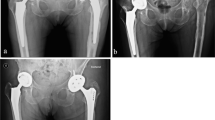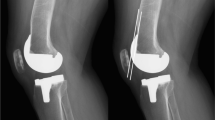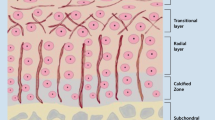Abstract
Purpose of Review
To provide information on characteristics and use of various ceramics in spine fusion and future directions.
Recent Findings
In most recent years, focus has been shifted to the use of ceramics in minimally invasive surgeries or implementation of nanostructured surface modification features to promote osteoinductive properties. In addition, effort has been placed on the development of bioactive synthetics. Core characteristic of bioactive synthetics is that they undergo change to simulate a beneficial response within the bone. This change is based on chemical reaction and various chemical elements present in the bioactive ceramics. Recently, a synthetic 15-amino acid polypeptide bound to an anorganic bone material which mimics the cell-binding domain of type-I collagen opened a possibility for osteogenic and osteoinductive roles of this hybrid graft material.
Summary
Ceramics have been present in the spine fusion arena for several decades; however, their use has been limited. The major obstacle in published literature is small sample size resulting in low evidence and a potential for bias. In addition, different physical and chemical properties of various ceramics further contribute to the limited evidence. Although ceramics have several disadvantages, they still hold a great promise as a value-based graft material with being easily available, relatively inexpensive, and non-immunogenic.

Similar content being viewed by others
References
Papers of particular interest, published recently, have been highlighted as: • Of importance •• Of major importance
Buser Z, Ortega B, D’Oro A, Pannell W, Cohen JR, Wang J, et al. Spine degenerative conditions and their treatments: national trends in the United States of America. Glob Spine J. 2018;8(1):57–67. https://doi.org/10.1177/2192568217696688.
John J, Mirahmadizadeh A, Seifi A. Association of insurance status and spinal fusion usage in the United States during two decades. J Clin Neurosci. 2018;51:80–4.
Gruskay JA, Basques BA, Bohl DD, Webb ML, Grauer JN. Short-term adverse events, length of stay, and readmission after iliac crest bone graft for spinal fusion. Spine. 2014;39(20):1718–24.
Tay BK, Patel VV, Bradford DS. Calcium sulfate and calcium phosphate-based bone substitutes. Mimicry of the mineral phase of bone. Orthop Clin North Am. 1999;30:615–23.
Vaz K, Verma K, Protopsaltis T, Schwab F, Lonner B, Errico T. Bone grafting options for lumbar spine surgery: a review examining clinical efficacy and complications. SAS J. 2010;4(3):75–86.
Khan SN, Fraser JF, Sandhu HS, Cammisa FP Jr, Girardi FP, Lane JM. Use of osteopromotive growth factors, demineralized bone matrix, and ceramics to enhance spinal fusion. J Am Acad Orthop Surg. 2005;13(2):129–37.
Cook RW, Hsu WK. Ceramics: clinical evidence for ceramics in spine fusion. Semin Spine Surgery. 2016;28(4):217–25.
• Korovessis P, Koureas G, Zacharatos S, Papazisis Z, Lambiris E. Correlative radiological, self-assessment and clinical analysis of evolution in instrumented dorsal and lateral fusion for degenerative lumbar spine disease. Autograft versus coralline hydroxyapatite. Eur Spine J. 2005;14:630–8 An RCT comparing HA + local bone + BMA to ICBG in 60 patients undergoing posterior lumbar fusion. In HA groups, fusion was observed within the decorticated laminae but not intertransverse. Some of the major risks of bias included lack of randomization and differences in baseline characteristics among groups.
Yoshii T, Yuasa M, Sotome S, Yamada T, Sakaki K, Hirai T, et al. Porous/dense composite hydroxyapatite for anterior cervical discectomy and fusion. Spine. 2013;38(10):833–40.
Lee JH, Hwang CJ, Song BW, Koo KH, Chang BS, Lee CK. A prospective consecutive study of instrumented posterolateral lumbar fusion using synthetic hydroxyapatite (Bongros-HA) as a bone graft extender. J Biomed Mater Res A. 2009;90(3):804–10.
Nickoli MS, Hsu WK. Ceramic-based bone grafts as a bone grafts extender for lumbar spine arthrodesis: a systematic review. Glob Spine J. 2014;4(3):211–6.
Garin C, Boutrand S. Natural hydroxyapatite as a bone graft extender for posterolateral spine arthrodesis. Int Orthop. 2016;19.
Yoo JS, Min SH, Yoon SH. Fusion rate according to mixture ratio and volumes of bone graft in minimally invasive transforaminal lumbar interbody fusion: minimum 2-year follow-up. Eur J Orthop Surg Traumatol. 2015;25:183–9.
Brandoff JF, Silber JS, Vaccaro AR. Contemporary alternatives to synthetic bone grafts for spine surgery. Am J Orthop. 2008;37:410–4.
Jarcho M. Calcium phosphate ceramics as hard tissue prosthetics. Clin Orthop. 1981;157:259–78.
Dai LY, Jiang LS. Single-level instrumented posterolateral fusion of lumbar spine with beta-tricalcium phosphate versus autograft: a prospective, randomized study with 3-year follow-up. Spine. 2008;33(12):1299–304.
Gan Y, Dai K, Zhang P, Tang T, Zhu Z, Lu J. The clinical use of enriched bone marrow stem cells combined with porous beta-tricalcium phosphate in posterior spinal fusion. Biomaterials. 2008;29:3973–82.
Abbasi H, Miller L, Abbasi A, Orandi V, Khaghany K. Minimally invasive scoliosis surgery with oblique lateral lumbar interbody fusion: single surgeon feasibility study. Cureus. 2017;9(6):e1389.
• Parker RM, Malham GM. Comparison of a calcium phosphate bone substitute with recombinant human bone morphogenetic protein-2: a prospective study of fusion rates, clinical outcomes and complications with 24-month follow-up. Eur Spine J. 2017;26(3):754–63 Patients undergoing XLIF with β-TCP or rhBMP-2. In patients with addition of posterior fusion, fusion rates were similar between the groups. In standalone XLIF patients, rhBMP-2 had higher fusion rates. There was a difference in number of patients between the groups.
Malham GM, Ellis NJ, Parker RM, Blecher CM, White R, Goss B, et al. Maintenance of segmental lordosis and disk height in stand-alone and instrumented extreme lateral interbody fusion (XLIF). Clin Spine Surg. 2017;30(2):E90–8.
Campana V, Milano G, Pagano E, Barba M, Cicione C, Salonna G, et al. Bone substitutes in orthopaedic surgery: from basic science to clinical practice. J Mater Sci Mater Med. 2014;25:2445–61. https://doi.org/10.1007/s10856-014-5240-2.
Roberts TT, Rosenbaum AJ. Bone grafts, bone substitutes and orthobiologics. Organogenesis. 2012;8(4):114–24. https://doi.org/10.4161/org.23306.
• Buser Z, Brodke DS, Youssef JA, Meisel HJ, Myhre SL, Hashimoto R, et al. Synthetic bone graft versus autograft or allograft for spinal fusion: a systematic review. J Neurosurg. 2016;25(4):509–16. https://doi.org/10.3171/2016.1.SPINE151005A systematic review of various ceramics for cervical and lumbar fusion. Overall evidence was low due to the high risk of bias and small sample sizes in both lumbar and cervical studies.
Kao FC, Hsieh MK, Yu CW, Tsai TT, Lai PL, Niu CC, et al. Additional vertebral augmentation with posterior instrumentation for unstable thoracolumbar burst fractures. Injury. 2017;48(8):1806–12. https://doi.org/10.1016/j.injury.2017.06.015.
Liao J, Chen W, Wang H. Treatment of thoracolumbar burst fractures by short-segment pedicle screw fixation using a combination of two additional pedicle screws and vertebroplasty at the level of the fracture: a finite element analysis. BMC Musculoskelet Disord. 2017;18:262(18). https://doi.org/10.1186/s12891-017-1623-0.
Liao J, Fan K. Posterior short-segment fixation in thoracolumbar unstable burst fractures – transpedicular grafting or six-screw construct? Clin Neurol Neurosurg. 2017;153:56–63. https://doi.org/10.1016/j.clineuro.2016.12.011.
Liu D, Wu ZX, Zhang Y, Wang CR, Xie QY, Gong K, et al. Local treatment of osteoporotic sheep vertebral body with calcium sulfate for decreasing the potential fracture risk: microstructural and biomechanical evaluations. Clin Spine Surg. 2016;29(7):E358–64. https://doi.org/10.1097/BSD.0b013e3182a22a96.
Xie Y, Li H, Yuan J, Fu L, Yang J, Zhang P. A prospective randomized comparison of PEEK cage containing calcium sulphate or demineralized bone matrix with autograft in anterior cervical interbody fusion. Int Orthop. 2015;39:1129–36. https://doi.org/10.1007/s00264-014-2610-.
Hoppe S, Keel MJB. Pedicle screw augmentation in osteoporotic spine: indications, limitations and technical aspects. Eur J Trauma Emerg Surg. 2017;43:3–8. https://doi.org/10.1007/s00068-016-0750-x.
Webb JCJ, Spencer RF. The role of polymethylmethacrylate bone cement in modern orthopaedic surgery. J Bone Joint Surg Br. 2007;89-B:851–7. https://doi.org/10.1302/0301-620X.89B7.19148.
Noordhoek I, Koning MT, Jacobs WCH, Vleggeert-Lankamp CLA. Incidence and clinical relevance of cage subsidence in anterior cervical discectomy and fusion: a systematic review. Acta Neurochir. 2018;160:873–80. https://doi.org/10.1007/s00701-018-3490-3.
Farrokhi M, Nikoo Z, Gholami M, Hosseini K. Comparison between acrylic cage and polyetheretherketone (PEEK) cage in single-level anterior cervical discectomy and fusion: randomized clinical trial. Clin Spine Surg. 2017;30:38–46. https://doi.org/10.1097/BSD.0000000000000251.
Elder BD, Lo SF, Holmes C, Goodwin CR, Kosztowski TA, Lina IA, et al. The biomechanics of pedicle screw augmentation with cement. Spine J. 2015;15(6):1432–45. https://doi.org/10.1016/j.spinee.2015.03.016.
Martín-Fernández M, López-Herradón A, Piñera AR, Tomé-Bermejo F, Duart JM, Vlad MD, et al. Potential risks of using cement-augmented screws for spinal fusion in patients with low bone quality. Spine J. 2017;17:1192–9. https://doi.org/10.1016/j.spinee.2017.04.029.
Wang Z, Liu Y, Rong Z, Wang C, Liu X, Zhang F, et al. Clinical evaluation of a bone cement-injectable cannulated pedicle screw augmented with polymethylmethacrylate: 128 osteoporotic patients with 42 months of follow up. Clinics. 2019;74:1–10. https://doi.org/10.6061/clinics/2019/e346.
Rong Z, Zhang F, Xiao J, Wang Z, Luo F, Zhang Z, et al. Application of cement-injectable cannulated pedicle screw in treatment of osteoporotic thoracolumbar vertebral compression fracture (AO type A): a retrospective study of 28 cases. World Neurosurg. 2018;120:e247–58. https://doi.org/10.1016/j.wneu.2018.08.045.
Dai F, Liu Y, Zhang F, Sun D, Luo F, Zhang Z, et al. Surgical treatment of the osteoporotic spine with bone cement-injectable cannulated pedicle screw fixation: technical description and preliminary application in 43 patients. Clinics. 2015;70:114–9. https://doi.org/10.6061/clinics/2015(02)08.
Cao Y, Liang Y, Wan S, Jiang C, Jiang X, Chen Z. Pedicle screw with cement augmentation in unilateral transforaminal lumbar interbody fusion: a 2-year follow-up study. World Neurosurg. 2018;118:e288–95. https://doi.org/10.1016/j.wneu.2018.06.181.
Nagineni VV, James AR, Alimi M, Hofstetter C, Shin BJ, Njoku I Jr, et al. Silicate-substituted calcium phosphate ceramic bone graft replacement for spinal fusion procedures. Spine (Phila Pa 1976). 2012;37:E1264–72.
Wheeler DL, Jenis LG, Kovach ME, Marini J, Turner AS. Efficacy of silicated calcium phosphate graft in posterolateral lumbar fusion in sheep. Spine J. 2007;7:308–17.
Carlisle EM. Silicon: a possible factor in bone calcification. Science. 1970;167:279–80.
Cameron K, Travers P, Chander C, Buckland T, Campion C, Noble B. Directed osteogenic differentiation of human mesenchymal stem/precursor cells on silicate substituted calcium phosphate. J Biomed Mater Res A. 2013;101:13–22.
Jenis LG, Banco RJ. Efficacy of silicate-substituted calcium phosphate ceramic in posterolateral instrumented lumbar fusion. Spine (Phila Pa 1976). 2010;35:E1058–63.
Alimi M, Navarro-Ramirez R, Parikh K, Njoku I, Hofstetter CP, Tsiouris AJ, et al. Radiographic and clinical outcome of silicate-substituted calcium phosphate (Si-CaP) ceramic bone graft in spinal fusion procedures. Clin Spine Surg. 2017;30:E845–E52.
Licina P, Coughlan M, Johnston E, Pearcy M. Comparison of silicate-substituted calcium phosphate (Actifuse) with recombinant human bone morphogenetic protein-2 (infuse) in posterolateral instrumented lumbar fusion. Glob Spine J. 2015;5:471–8.
Pimenta L, Marchi L, Oliveira L, Coutinho E, Amaral R. A prospective, randomized, controlled trial comparing radiographic and clinical outcomes between stand-alone lateral interbody lumbar fusion with either silicate calcium phosphate or rh-BMP2. J Neurol Surg A Cent Eur Neurosurg. 2013;74:343–50.
Mokawem M, Katzouraki G, Harman CL, Lee R. Lumbar interbody fusion rates with 3D-printed lamellar titanium cages using a silicate-substituted calcium phosphate bone graft. J Clin Neurosci. 2019;68:134–9.
Bolger C, Jones D, Czop S. Evaluation of an increased strut porosity silicate-substituted calcium phosphate, SiCaP EP, as a synthetic bone graft substitute in spinal fusion surgery: a prospective, open-label study. Eur Spine J. 2019;28:1733–42.
Lerner T, Liljenqvist U. Silicate-substituted calcium phosphate as a bone graft substitute in surgery for adolescent idiopathic scoliosis. Eur Spine J. 2013;22(Suppl 2):S185–94.
Jones JR. Review of bioactive glass: from Hench to hybrids. Acta Biomater. 2013;9:4457–86.
Xynos ID, Edgar AJ, Buttery LD, Hench LL, Polak JM. Gene-expression profiling of human osteoblasts following treatment with the ionic products of Bioglass 45S5 dissolution. J Biomed Mater Res. 2001;55:151–7.
Kaufmann EA, Ducheyne P, Shapiro IM. Effect of varying physical properties of porous, surface modified bioactive glass 45S5 on osteoblast proliferation and maturation. J Biomed Mater Res. 2000;52:783–96.
Lindfors NC, Tallroth K, Aho AJ. Bioactive glass as bone-graft substitute for posterior spinal fusion in rabbit. J Biomed Mater Res. 2002;63:237–44.
Bergman SALL. Bone in-fill of non-healing calvarial defects using particulate bioglass and autogenous bone. Bioceramics. 1995;8:17–21.
BW C. The use of Bioglass for spinal arthrodesis and iliac crest repair-an in vivo sheep model. In I O ed. Proceedings of the North American Spine Society, Annual Meeting, San Francisco, CA, October 28–31.: Elsevier Science, 1998:214–6.
Ilharreborde B, Morel E, Fitoussi F, Presedo A, Souchet P, Penneçot GF, et al. Bioactive glass as a bone substitute for spinal fusion in adolescent idiopathic scoliosis: a comparative study with iliac crest autograft. J Pediatr Orthop. 2008;28:347–51.
Frantzén J, Rantakokko J, Aro HT, Heinänen J, Kajander S, Gullichsen E, et al. Instrumented spondylodesis in degenerative spondylolisthesis with bioactive glass and autologous bone: a prospective 11-year follow-up. J Spinal Disord Tech. 2011;24:455–61.
Barrey C, Broussolle T. Clinical and radiographic evaluation of bioactive glass in posterior cervical and lumbar spinal fusion. Eur J Orthop Surg Traumatol. 2019;29:1623–9.
Sherman BP, Lindley EM, Turner AS, Seim HB 3rd, Benedict J, Burger EL, et al. Evaluation of ABM/P-15 versus autogenous bone in an ovine lumbar interbody fusion model. Eur Spine J Off Publ Eur Spine Soc Eur Spinal Deform Soc Eur Sect Cerv Spine Res Soc. 2010;19(12):2156–63. https://doi.org/10.1007/s00586-010-1546-z.
Yang XB, Bhatnagar RS, Li S, Oreffo ROC. Biomimetic collagen scaffolds for human bone cell growth and differentiation. Tissue Eng. 2004;10(7–8):1148–59. https://doi.org/10.1089/ten.2004.10.1148.
Arnold PM, Sasso RC, Janssen ME, Fehlings MG, Smucker JD, Vaccaro AR, et al. Efficacy of i-factor bone graft versus autograft in anterior cervical discectomy and fusion: results of the prospective, randomized, single-blinded Food and Drug Administration investigational device exemption study. Spine. 2016;41(13):1075–83. https://doi.org/10.1097/BRS.0000000000001466.
Arnold PM, Sasso RC, Janssen ME, Fehlings MG, Heary RF, Vaccaro AR, et al. i-FactorTM bone graft vs autograft in anterior cervical discectomy and fusion: 2-year follow-up of the randomized single-blinded Food and Drug Administration investigational device exemption study. Neurosurgery. 2018;83(3):377–84. https://doi.org/10.1093/neuros/nyx432.
Axelsen MG, Overgaard S, Jespersen SM, Ding M. Comparison of synthetic bone graft ABM/P-15 and allograft on uninstrumented posterior lumbar spine fusion in sheep. J Orthop Surg. 2019;14(1):2. https://doi.org/10.1186/s13018-018-1042-4.
Mobbs RJ, Maharaj M, Rao PJ. Clinical outcomes and fusion rates following anterior lumbar interbody fusion with bone graft substitute i-FACTOR, an anorganic bone matrix/P-15 composite. J Neurosurg Spine. 2014;21(6):867–76. https://doi.org/10.3171/2014.9.SPINE131151.
Skovrlj B, Guzman JZ, Al Maaieh M, Cho SK, Iatridis JC, Qureshi SA. Cellular bone matrices: viable stem cell-containing bone graft substitutes. Spine J. 2014;14(11):2763–72. https://doi.org/10.1016/j.spinee.2014.05.024.
Author information
Authors and Affiliations
Corresponding author
Ethics declarations
Conflict of Interest
No conflicts of interest for the current study. Disclosures outside of submitted work: Brandon Ortega, Carson Gardner, Sidney Roberts, and Andrew Chung have no disclosures. Jeffrey Wang: royalties—Biomet, Seaspine, Amedica, DePuy Synthes; investments/options—Bone Biologics, Pearldiver, Electrocore, Surgitech; board of directors—North American Spine Society, AO Foundation (20,000 honorariums for board position, plus travel for board meetings), Cervical Spine Research Society; editorial boards—Spine, the Spine Journal, Clinical Spine Surgery, Global Spine Journal; fellowship funding (paid directly to institution)—AO Foundation. Zorica Buser: consultancy—Cerapedics, The Scripps Research Institute, Xenco Medical (past), AO Spine (past); research support—SeaSpine (past, paid to the institution), Next Science (paid directly to institution), Motion Metrics (paid directly to institution); North American Spine Society—committee member; Lumbar Spine Society—co-chair research committee; AOSpine Knowledge Forum Degenerative—associate member; AOSNA Research Committee—committee member.
Additional information
Publisher’s Note
Springer Nature remains neutral with regard to jurisdictional claims in published maps and institutional affiliations.
This article is part of the Topical Collection on Updates in Spine Surgery—Techniques, Biologics, and Non-operative Management
Rights and permissions
About this article
Cite this article
Ortega, B., Gardner, C., Roberts, S. et al. Ceramic Biologics for Bony Fusion—a Journey from First to Third Generations. Curr Rev Musculoskelet Med 13, 530–536 (2020). https://doi.org/10.1007/s12178-020-09651-x
Published:
Issue Date:
DOI: https://doi.org/10.1007/s12178-020-09651-x




